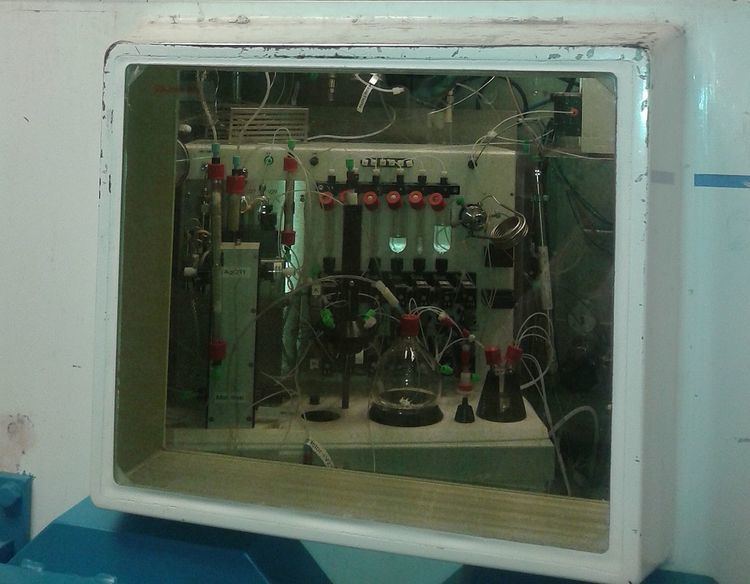 | ||
Radiosynthesis is a Fully Automated Synthesis method in which radioactive compounds are produced. Radiosynthesis is carried out by several nuclear interface modules, which are protected by the lead shielding generally and controlled by a computer semi-automatically. The set-ups of modules are different depends on the type of product and synthesis process. Consequently, the modules should be adapted with the synthesis stages. In some cases, such stages of synthesis are carried out manually in order to optimize the radiochemical yield or due to the incompatibility or lack of module.
Module
Radiosynthesis modules consist of following constant components:
There are also some components which are added based on the synthesis set-up such as stirrers, sterile filters, Sep-Paks™, vials, bottles, detectors etc..
Before every synthesis, the modules should be washed. It should also be mentioned that according to Half-life of radionuclides, a relaxation time is needed between the syntheses in each module. Fig.1 shows the schematic of a sample module.
Radiosynthesis modules are often combined with a cyclotron or other radio nuclide generator.
